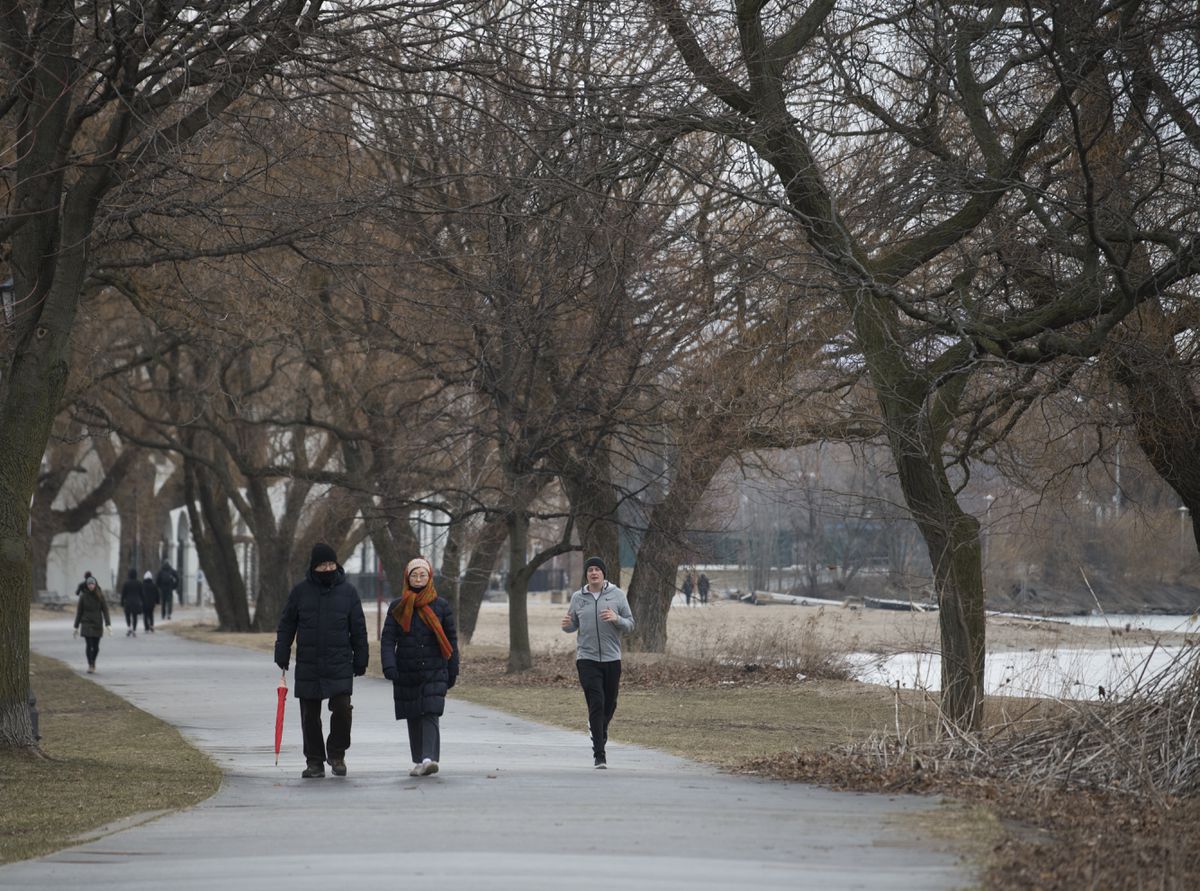
People walk along the Martin Goodman Trail as it passes through Sir Casimir Gzowski Park in Toronto on March 17, 2020. FRED LUM/THE GLOBE AND MAIL
Parks are “the lungs of the city.” That was how reformers talked about big urban parks in the 19th century, as those spaces and their cities grew together. I thought about this metaphor on the weekend as I hung out in High Park with my family and some friends. High Park is the closest thing Toronto has to a grand urban park, and it seemed the right place to go: The restaurants weren’t closed yet, but we were keeping our two metres of distance. What better place to do it?
After all, we could play soccer, have a picnic lunch, walk beneath oaks and catalpa, and watch other people pass by – without ever getting close enough to touch or to pass on a virus.
As we enter a long period of huddling at home, it’s clear that places like High Park will be necessary escapes. For the millions of us who live in cities and lack a lush backyard, green space is something we’ll have to seek out – in order to stay healthy, in body and in spirit.
Parks are lungs for the city, and they’re medicine for us.
A century ago, these ideas were more literal. Ordinary city people lived in cramped households under difficult conditions. Air pollution and filth were everywhere. Communicable diseases were widespread. Light and air were understood as medicinal. At the height of tuberculosis, a public-health slogan was “Always sleep with the window open.”
This reality was what gave birth to the great urban parks beginning around 1800, first in Europe and then North America. Frederick Law Olmsted, who worked on great urban parks including Mount Royal and Central Park, wrote that trees cleaned the air and prevented the spread of sickness.
But he also understood, as did his contemporaries, the value of open space and green space for what we now call mental health. “If we have no relief from [the town] during our waking hours, we should all feel conscious of suffering from it,” Olmsted wrote. Getting a break was crucial to a comfortable urban life, he wrote in 1870, but also to “our ability to maintain a temperate, good-natured and healthy state of mind.”
That seems deeply relevant today. My home is comfortable enough. I’m escaping nothing worse than some broad anxiety, the discomfort of working on a laptop and the drama of sharing a space with my wife and two bored children. But it’s enough. We are isolating ourselves for safety and the walls are already beginning to close in. Given the threats that are coming, and the uncertain path in front of us, we’ve decided to get out each day to a park, for as long as we are allowed.
We will be cautious. We’ll stay far from the playgrounds and we will touch no one. But we’ll get outside into the grand places that our society has built and maintained for us: the lungs for the city. We each need to take a breath.
ALEX BOZIKOVIC
ARCHITECTURE CRITIC
The Globe and Mail, March 17, 2020
